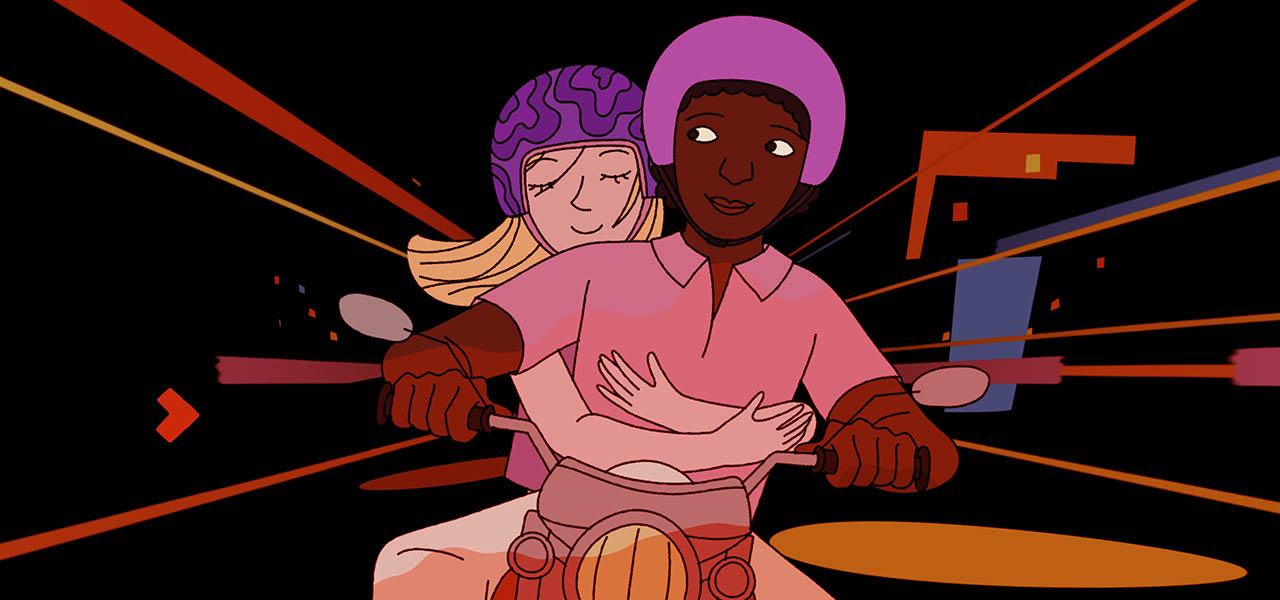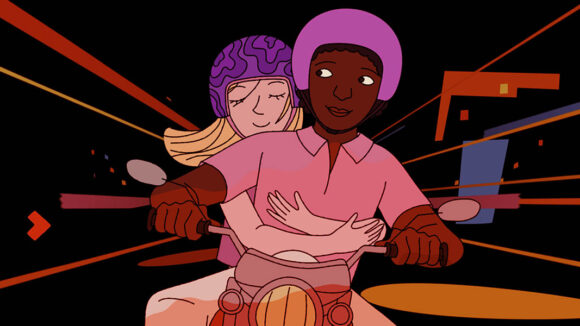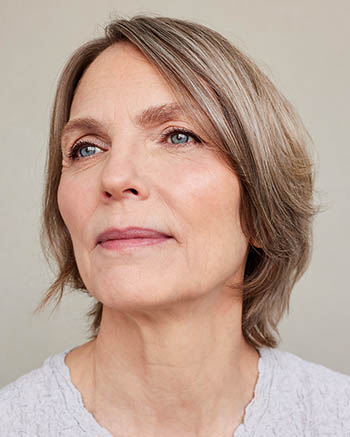

2025 Oscars Short Film Contenders: ‘Maybe Elephants’ Director Torill Kove
Cartoon Brew is focusing on the animated shorts that have qualified for the 2025 Oscars. The films in this series have qualified through one of multiple routes: by winning an Oscar-qualifying award at a film festival, by exhibiting theatrically, or by winning a Student Academy Award.
Today’s film is Maybe Elephants from Norwegian director Torill Kove. The short earned its Oscars qualification through theatrical exhibition.
Maybe Elephants is a 2d animated short co-produced by Norwegian studio Mikrofilm and the National Film Board of Canada. In the film, Oscar-winning filmmaker Torill Kove (The Danish Poet) recalls the memories of her childhood in Kenya, where she moved with her parents and teen sisters in the 1970s. Her happy recollections clash with her mother’s attitude, who seems to fall into a depressive and restless state.
Cartoon Brew: In the film, you tackle the subject of adult depression. Why was it important for you to make it part of your film, along with your own experience?

Torill Kove: Initially, I was mostly focused on my family’s separation and the idea that external and internal forces can hold a family together and pull it apart. While writing, I looked for clues: What happened in Kenya? Did our bubble burst because we were outside our comfort zone? Were my sisters and I too “difficult”? Was my mother bitter because her career came to a screeching halt while my father’s flourished? Did we crack under the stress of adjusting to a different culture?
My mother’s cloud was in the story from the beginning. Gradually, the cloud became the story’s anchor; it followed the rule of three and made my mother the story’s heroine. I hesitate to talk about “my mother’s depression” because I don’t know much about it. What I do know is that my mother grew up in a family haunted by grief and fearful of the effects of war, and maybe that’s where her cloud formed. I suspect the cloud, to some extent, formed her, and since it went with her everywhere, it impacted some people close to her. In real life, my mother fought against the crowd: She was a lone woman in a male-dominated profession and believed and insisted that she could have several children and pursue a career in a 1960-1970s society that said she couldn’t and shouldn’t. She was an idealist with a hunger to contribute to the world. My mother, in other words, was my life’s first feminist.
What was it about this story or concept that connected with you and compelled you to direct the film?
I wanted to make a film about my family’s time in Kenya and the family separation in the wake of that. Maybe Elephants is a somewhat autobiographical story about how “everything was fine, but something happened.” Writing as an adult looking back, I wondered what exactly happened and how dependable my memory of events from almost 50 years ago is. As I tinkered with the story, it became increasingly layered. It’s about a family that leaves its comfort zone and moves to a different country. But underneath, there’s a story about a woman looking for a place free of “clouds,” and her husband, who is nuts about her and just wants to be with her. It’s about teenagers exploring a big city and testing boundaries, and the strength and fragility of connections between people.
Living in Kenya as a teen had a profound positive impact on my life. It instilled in me an idealism that I can connect with people anywhere with whom I have no shared history as long as there is shared humanity. In a way, Maybe Elephants is, among other things, a thank-you note to my family and Kenya for the memories, even if I’m not sure I remember them correctly.
What did you learn through the experience of making this film, either production-wise, filmmaking-wise, creatively, or about the subject matter?
Production-wise, Maybe Elephants had a bigger team than I am used to, especially in the animation and art direction departments. I’m not a control freak, but I must admit, with so many people involved, I was afraid I would lose the grip on my vision for the film. What I learned is that my vision got sharper because I had to articulate it to others and discuss it in many different contexts.
It is safe to say that I learned something from everybody who worked on the film; I also learned that I love working with a team of people. I like the collegial “joined effort” and community aspects. I am beyond grateful for all my fantastic producers and all the outstanding artistic talent that contributed to making this film at Mikrofilm in Norway and the NFB in Canada.
Can you describe how you developed your visual approach to the film? Why did you settle on this style/technique?
Building the visual universe of a story is an exciting part of the process. It’s when my thoughts and whatever drawing tool I have in hand start exploring possibilities. I chose 2d drawing animation because that’s what I do — I wanted a direct connection between the first sketches and the final film. I wanted simplicity in the drawings and complexity in colors and depth. I wanted a drive-by scene from the outskirts of Nairobi, where we lived. I wanted teenagers on motorcycles at night, a big starry sky and crickets and flamingos, violet jacaranda trees and reddish-brown soil. I wanted some magic and some realism, and teen girls with too much eye makeup.
After a while, I had a pile of sketches depicting a bunch of characters, my Norwegian town, Kenya and Nairobi, drawn partly from memory and partly from photographs. And then we hired Magnhild Winsnes, a brilliant Norwegian animator and graphic novel author/illustrator, to be the art director. Magnhild and I took these intuitive bits and pieces of visual thoughts and scribbles and translated them into our concept for the film.
